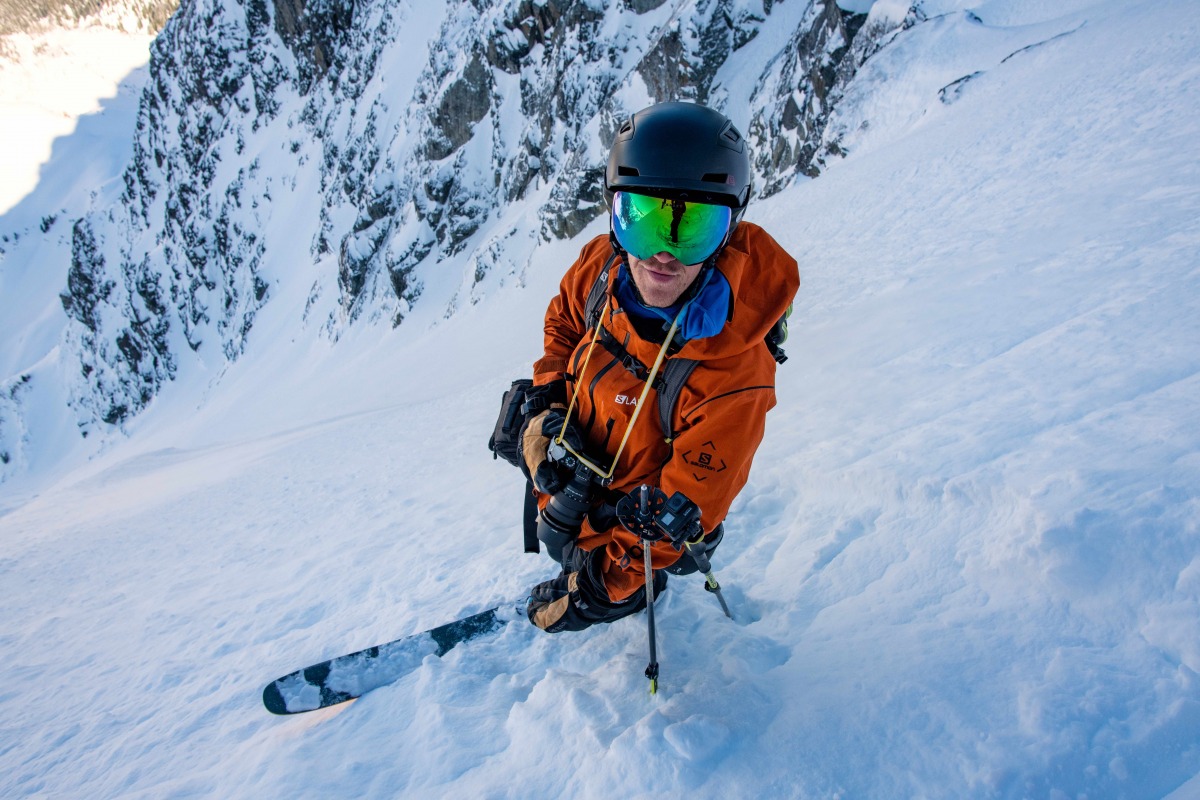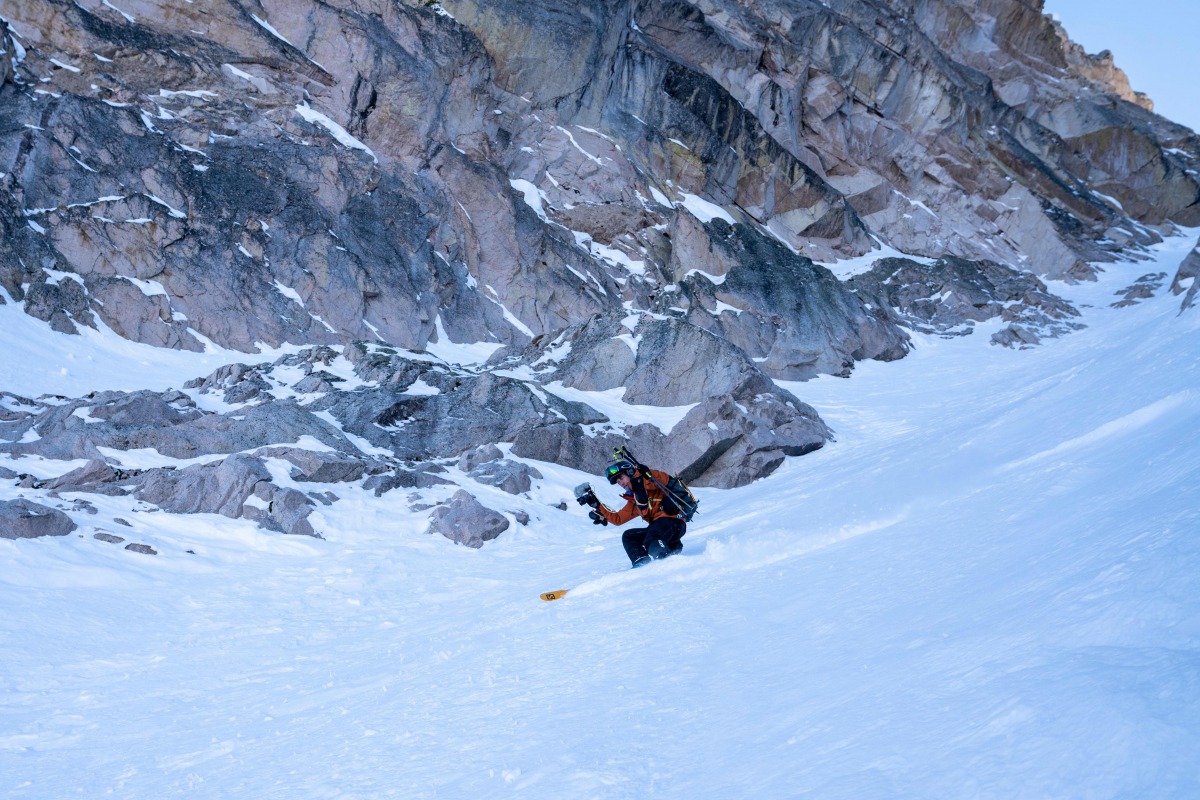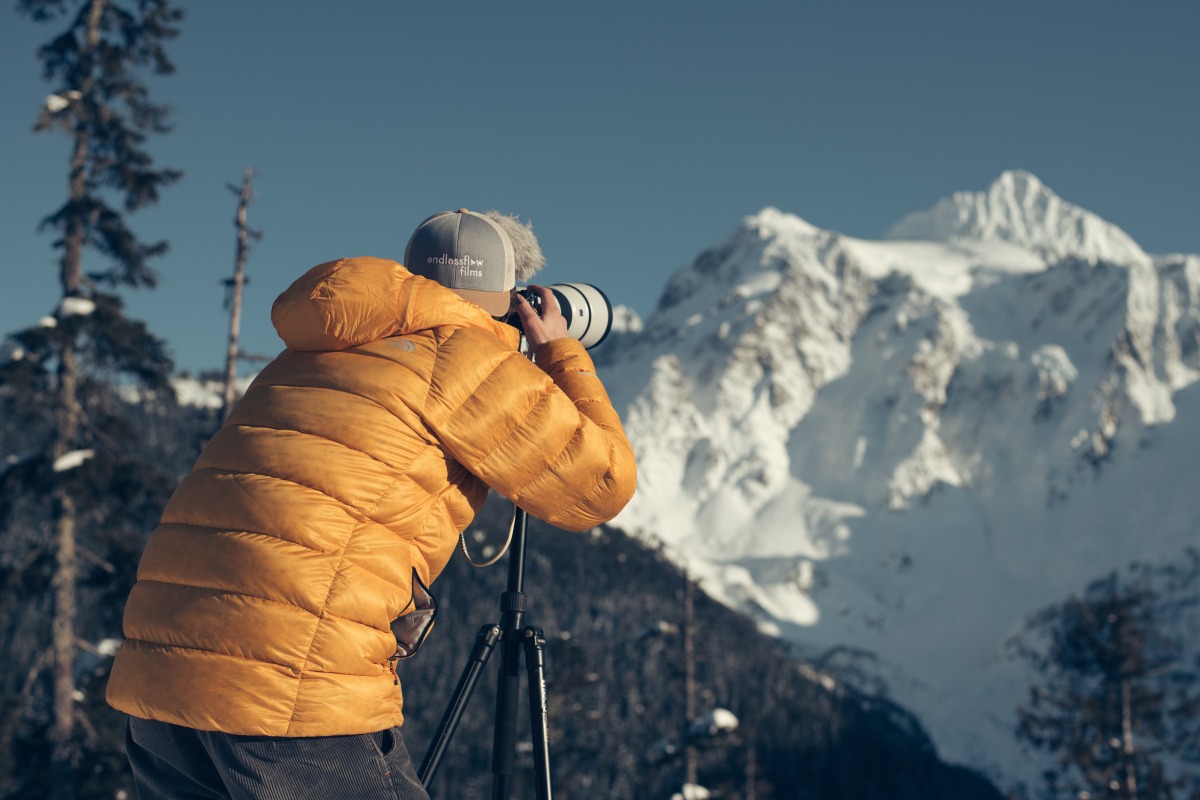Lockdowns are being lifted in states across the U.S. and we’re hoping this will be the last of our Quarantine Q&A series. This interview was conducted during the height of quarantine in April, so things have evolved a bit since then. See our other interviews here .

Bjarne on the day’s line armed with the Sony A7SII and a GoPro attached to pole grip. Photo:@Jasonhummel
On quarantine in Oregon and filming the Fifty Project
Bjarne Salen is a Swedish ski mountaineer and cinematographer, based in Portland and Hood River, Oregon and currently most known for his work on “The Fifty Project”. He started filming ski-mountaineering when he was 20 years old and has traveled all over the planet to capture big ski descents. The late Andreas Fransson, Bjarne’s best friend and expedition partner, taught him a lot. In regards to Fransson and learning he told me “life is a long learning curve and it still goes on and will always continue.” We talked recently about life during the quarantine and filming ski mountaineering.
GS: Tell me a little bit about the current social conditions where you’re living there in Oregon.
BS: Most things are shut down and grocery stores are open. Some hardware stores are open and all that, and things are strange, probably like everywhere. Imagine a Sunday morning when everything’s dead before it opens, that’s kind of how this feels 24/7! It’s a little boring but I’m not alone so just trying to stay healthy and enjoy the spring.
GS: You’re staying locally in Portland, so you’re not skiing. Are people able to ski in Oregon?
BS: You can’t access any ski resorts and they shut down most things. All the state and national parks are closed. If you really want to go skiing, you can still go for a little ski tour somewhere I would imagine, but you’re really not supposed to as per the stay-at-home guidelines and laws. There’s a ton of snow out there, typically you can ski on Hood even in July if you want to, but there are roadblocks currently.
GS: What are you doing instead of skiing?
BS: I’m hoping that it’s going to open up soon. But until then I stay in really good shape anyway. I do a lot of training and workouts around the house, and some biking with my new rad e-bike, and I’ve been trail running in some secret spots with no one around.
GS: What do you miss most about skiing?
BS: It’s so fun to get with friends and be in the mountains. I love that. I think it’s kind of a bigger question because skiing is not just a turn. To me, it’s driving around and seeing all these places and meeting all these amazing, beautiful people. You get to know areas and you get new friends. Of course, skiing is super fun to do some really good turns and just climb up the mountain and be exhausted up there and come down and cook good food. So it’s not just having ski boots on, it’s everything around it. It’s the whole package; I miss that entire package.
GS: Your native Sweden has been able to take a different approach towards the coronavirus. Have been able to talk to friends and family about the difference between there and Oregon?
BS: Yeah, it’s a big difference. I talked to my family back home, they are in Gothenburg, west coast in Sweden. Kids are in school and people still work but they are working less, and observing social distancing. I think it’s a big difference between the US and Sweden, but no one knows which one is right or wrong. I’m just listening to the science and health experts and the people that have been studying this for the best advice. It’s also very different because in Sweden the healthcare system is completely different than the United States. Swedish are probably more disciplined when it comes to a lockdown or social distancing, maybe respect it a little bit extra in some ways. People are kind of far away from each other normally, we don’t have a massive city like New York in Sweden. Maybe Sweden comes out as a leader in a year after this or completely opposite. No one knows, right?
On filming ski mountaineering

Whatever it takes to get the shot. Salen skiing a classic- glove, goggle and pole-less with the A7SII. Photo: @mingpoon
GS: Ski mountaineering is an inherently dangerous sport, how do you mitigate that danger while still thinking about the story and the scene?
BS: Balancing those two is a great challenge that I enjoy. I look at safety first. Take one step at a time and be like, “Okay, can I go over there?” Yes, I can. When you feel safe, then you can think about the shot you want or the story that you have been building for weeks. I often have to be one step ahead of everyone. I can’t stop the group and be like, “Oh, sorry, this would be a good shot.” I need to physically be ahead and also mentally think one step ahead.
Working with Cody, we are on the same page when it comes to safety. So if I get some bad vibes, I’m happy to share them straight away and he understands them and vice versa. It takes a lot of years to understand what’s okay for someone and what’s not okay and you just have to listen to yourself and communicate with your partner.
GS: How much more travel or vert do you think you would end up doing on an average trip than the rest of the team?
BS: Not that much more, I think I just have to decide when I want to power ahead and not. For example, on the way up if I decide I’m gonna push it harder and put the track in so I can get these shots and get the team kind of up there, then I’m happy to do so. On the way down, the skiers often need to ski well in front of the camera. I can ski like shit because I’m very tired you know, that’s fine.– [laughs]
GS: Are you ever not summiting and posting up for a shot instead?
BS: I’m always summiting with a team because it’s nice to be up there and get the close shots of everyone. I’m filming when they get stoked and emotional up there. Getting that emotional shot is a very important thing for me.
GS: You mentioned the heavy pack. What do you think your pack weighs on an average outing?
BS: I don’t know and I don’t want to know! If it’s normal backcountry skiing, my backpack is a little bit heavier than others. But if it’s a big day with ropes and gear to put in the mountains, then obviously, I don’t carry any of that if I’m not leading, but we rarely get to that point around here.
GS: What camera gear do you typically carry?
BS: I bring as few cameras as I can. The bigger the mountain is, the less gear I’m bringing. I have a Sony A7SII with two different lenses and batteries and then I have a GoPro and batteries. I bring the drone and three or four batteries if we are in a zone where you’re allowed to fly. I leave it outside on that border if not. I bring a monopod that I hang from my backpack.

Salen getting some footage of Mt Shuksan. Photo: @jasonhummel
GS: Any tricks to keeping batteries functioning in cold mountain environments?
BS: I have, what do you call it, a fanny pack? One of those small pouches for a passport and stuff that you hang around your neck and keep inside your T-shirt while traveling. That hangs inside my base layer with batteries in it. It stays warm and it’s not in the way.
GS: How about keeping batteries charged while traveling, is that a challenge at all one place to the next?
BS: I have a really good van that I’ve built out myself and it has everything in there. I can charge whatever batteries I want and it’s warm, so they charge quickly. It has a huge battery system that charges while I drive, and also from two massive solar panels on the top when I’m parked, so there’s always plenty of power for everyone.
GS: What advance planning steps are you taking that the rest of the team is not doing?
BS: I need to make sure that I can have all the batteries charged and the memory cards formatted and packed. I’m looking at if we fly a drone there or not. If we can’t, maybe we can stop outside of the border and get a drone shot and then leave the drone. I’m thinking about how we can shoot it, and it’s something we talk about as a team. We take several breaks during the ascent. I try to plan out a little bit where those good shots could be and then when I have those ideas, I bring them up with the team and I hear from them as well about their ideas, so we work together to get the best shots.
GS: Last question, what was your first touring setup? How crazy was that compared to what you have now?
BS: I think it was a Marker Duke binding on a pair of pretty heavy White Dot skis. The setup was so ridiculously heavy and I cannot believe I used it for several years in Chamonix climbing and skiing crazy lines. [laughs]
GS: [laughs] Yeah, we’ve come a long way, haven’t we?
BS: Oh my gosh, yeah. [laughs]
See all of Bjarne’s work at endlessflowfilms.com
On March 22nd 2021, Gary Smith tragically died in an avalanche outside of Beaver Creek Resort in Colorado. Since 2018, Gary has been a frequent and insightful contributor to WildSnow. From Christmas Eve spent at the Wildsnow Field HQ cabin, to testing gear and sharing his love for steep skiing around the world, he was a pillar of the ski touring community and will be greatly missed.
